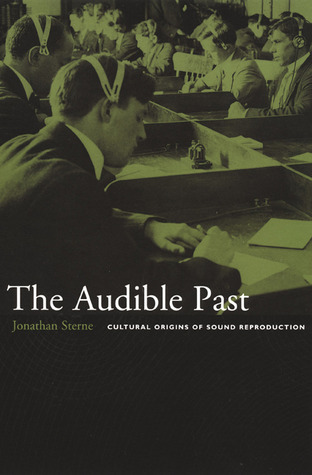
A scholarly history of the social and cultural origins of sound reproduction. Very much not an effort to tell a straightforward, linear story about the history of telegraphy, telephony, broadcasting, and recording, but rather draws selectively and nonlinearly from the decades before such tech was introduced and the early decades after to push readers to think differently about how our senses and how technology are integrated into the social world. He insists, for instance, that rather than the transhistorical or ahistorical way we often think about hearing – often through what he calls the “audiovisual litany”, a stock, binary account relating seeing and hearing that has roots in Christian theology and that informs even lots of sound theorists and historians doing relevant work – we need to recognize that how we relate to sound is in fact historical and changes over time as the social world changes. He identifies a set of practices of listening distinct to the modern era that he calls “audible technique.” It became general in the population as various sound-related technologies became mass media, and in fact had to do so in order for those technologies in those forms to be useful. But he also pushes back against the frequent tendency towards technological determinism that sees the introduction of a technology as singular cause and social shifts as only effects, and demonstrates that, for instance, audible technique actually existed for decades before the telephone or radio existed, and the fact that it already existed as a sort of cultural resource was part of what it made it possible for technological discoveries related to sound reproduction to take on particular social forms as mass media. Audible technique developed among physicians as part of the role the stethoscope played in medical practice beginning to take on its modern scientific form in the early 19th century, and among telegraph operators in the middle of the 19th century, and both its development in those niche professions and its generalization in the late 19th and early 20th centuries were bound up with developing middle-class practices around space, home, self, and propriety. He also takes apart common cultural assumptions that treat sound technologies as things that are supposed to have a certain sort of transparency (without ever quite reaching it) for mediating sound across distance and time while otherwise not changing what already is, when in fact there is often a much more complicated set of social relationships that have cohered around sound technologies such that the “original” being recorded or broadcast would never have existed in that form without the social imperative and capacity for that specific instance of recording/broadcasting to take place. He shows how the particular forms that sound media have today, which we often assume to be inevitable consequences of the development of the technology, are better understood as social crystallizations of quite contingent initial circumstances that could easily have developed in other ways. And…yeah. I won’t try to list them, but the book makes a number of other interventions to show how our senses and technology exist as they do for social and historical reasons, and they can exist quite differently as the social world changes.
Overall, it was certainly interesting. The book’s approach to understanding the social world resonates with my own to a significant extent. In general, I like reading books that push me to think in new ways, which this one did. All of that said, though, not all of the specific questions that this book focuses on are necessarily directly relevant to my own interest in or work on listening, so I didn’t find it quite as engaging as I thought I might when I first picked it up. Still glad I did, though.
Originally posted by Scott on Goodreads.